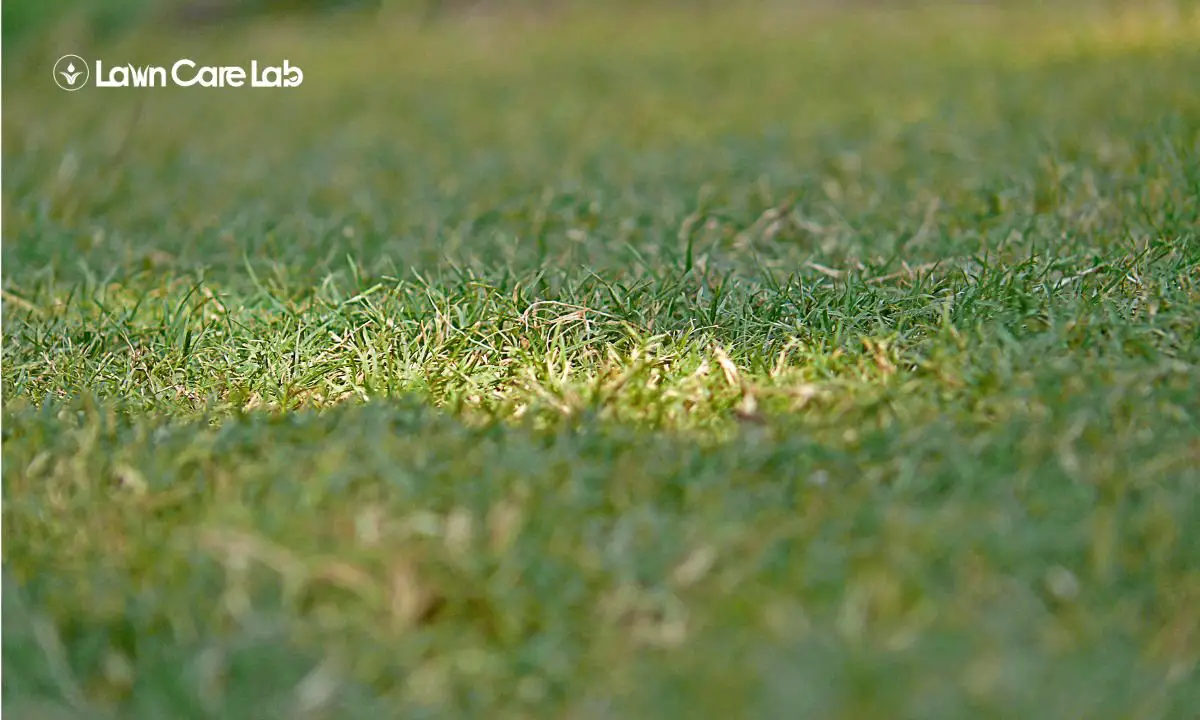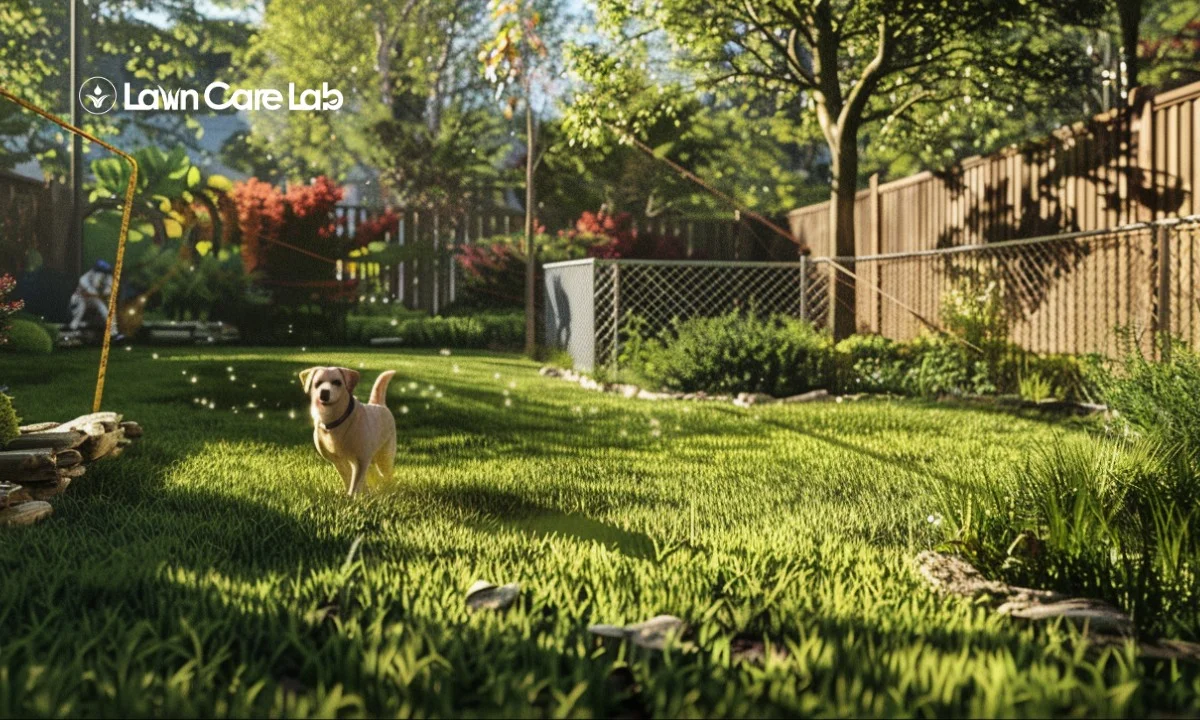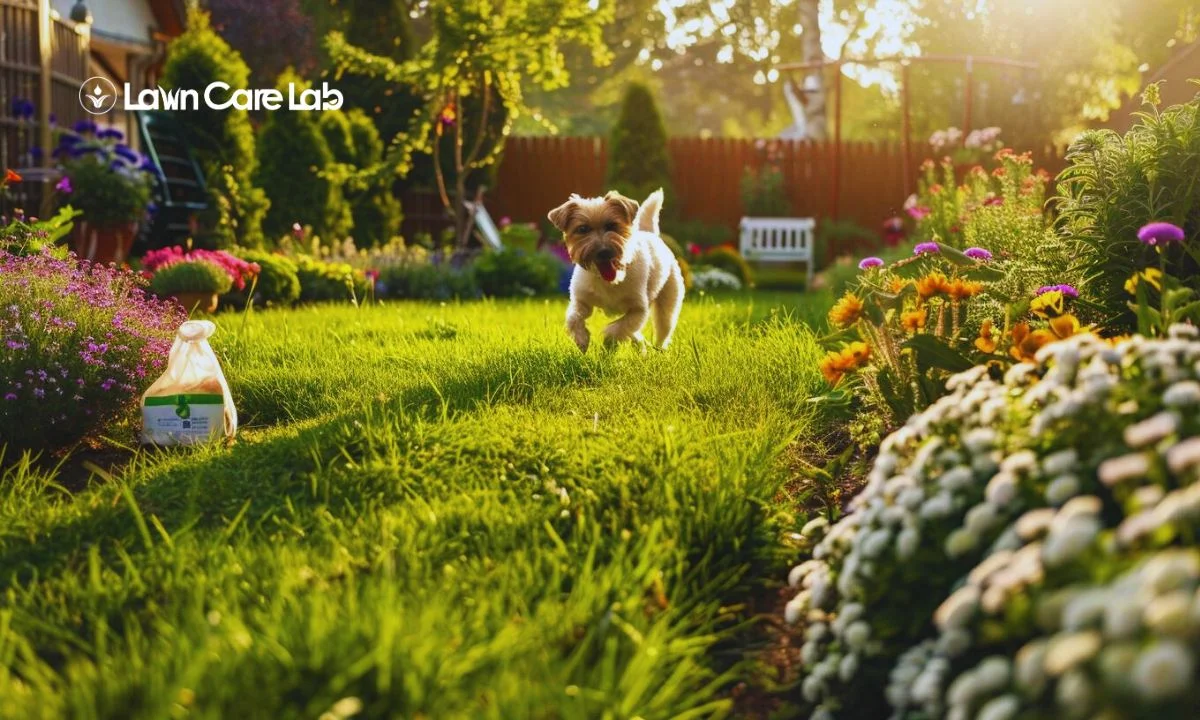Having a Bermuda grass lawn is great, but it can be tricky, right? Like all living things, it needs room to breathe. This is where lawn aeration comes in.
This guide will teach you when, how, and how often to aerate your Bermuda grass. Don’t stress; we have your back. It’s a straightforward task, and we’ll help you with each step.
Let’s get started and give your grass the fresh air it needs!
Table of Contents
When to Aerate Bermuda Grass

We will discuss the best times to aerate your Bermuda grass: spring, summer, and early fall.
In spring, the grass grows fast and can recover quickly after aeration.
In summer, when the temperature is usually above 60-65°F, aeration can be very beneficial.
Early fall aeration is your last chance before the grass sleeps for winter and helps stop weeds growing in the aeration holes.
Spring Aeration
Aerate Bermuda grass in early to mid-spring for the best growth and recovery. This aeration in spring lets your lawn bounce back before the tough summer heat. Aeration has many good points:
- It lets air, water, and food get into the soil easier.
- It lessens soil packing, helping roots grow well.
- It helps stop thatch from building up.
- It spurs new growth, making your lawn thicker.
- It sets up the perfect conditions for overseeding after aeration.
Aerating tools can be simple handheld ones or larger, more effective machines. Always remember safety comes first when using these tools.
Now that you know how to aerate warm-season grass in the spring, let’s talk about summer aeration.
Summer Aeration
Summer is a great time to take care of your lawn. Make sure it gets enough water, especially before and after aeration. Aeration in summer helps your grass grow better and lets water seep in more easily. Avoid aeration during the hottest part of the day to keep your lawn safe.
Think about renting an aerator to do this job well. You could also try different ways of aeration, like a spike or liquid aeration.
Be smart about when you aerate. Your grass needs at least 1 foot of water per week before aeration for the best recovery.
Fall Aeration
Aerating your lawn in the fall is a good idea. It gives your lawn time to heal before the first frost. During this time, fall weather helps cool season grasses grow roots, making your lawn care work more effective.
Here are some safety tips to follow:
- Make sure the ground is wet enough. If the soil is dry, it could break the aerator.
- Clear any rocks or rubbish to prevent accidents.
- Use the aerator in a way that covers all the lawn equally.
- Be safe when aerating slopes. It’s better to do these parts by hand.
- After aerating, think about overseeding. This fills empty spots, and the seeds grow better in the fall weather.
How to Aerate Bermuda Grass
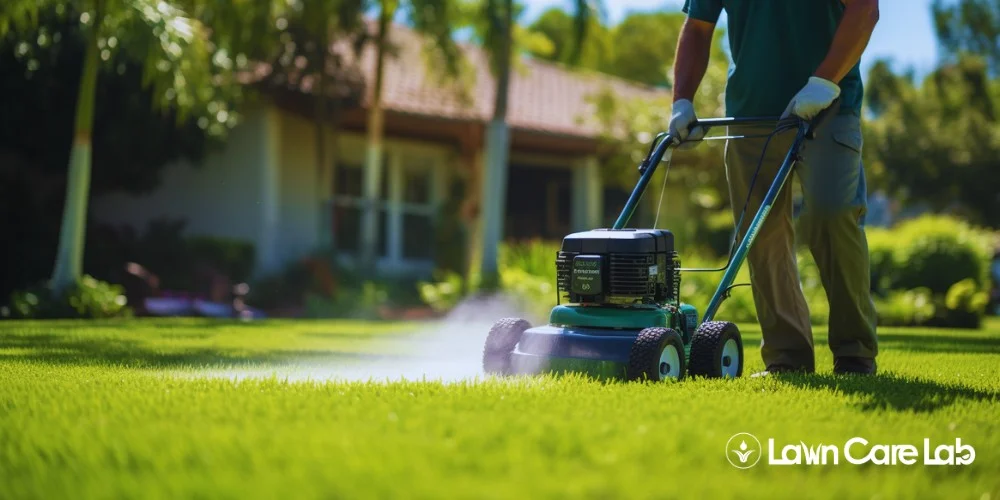
Now that you know when to aerate your Bermuda grass, let’s look at how to do it. We’ll give you key tips on properly using a plug aerator.
But we won’t stop there; we’ll also show you the important steps for taking care of your lawn after aeration to make sure your lawn stays healthy after its aeration treatment.
Aeration Tips
Keep these easy aeration tips in mind for a smooth and effective process.
Aeration has many benefits, but you need to use the right methods to get them.
- Start by making sure your soil is wet before you start. This makes it easier for the aeration machine to pull out plugs.
- Don’t just make one pass over your lawn. Go over it two to three times in different directions for good coverage. This is a common mistake that you should avoid.
- Make sure you have the right tools for aeration. Using the wrong ones could harm your lawn.
- If any plugs don’t break down, remove them. They could get in the way when you mow your lawn.
- Don’t forget how often to aerate. For Bermuda grass, you should do it once or twice a year.
These tips will make your aeration process safe and effective.
Post-Aeration Care
After aerating your lawn, there are important steps to help it recover quickly and thrive.
Adding compost fills holes and feeds the grass, making the most of aeration.
Using fertilizer helps recovery and growth, so you get the most from your aeration tools.
Adding more water keeps the soil wet, which helps break down cores and ensures proper aeration depth.
It is important to aerate at the right time when your lawn can take in the nutrients and water it needs.
Remember, how often you aerate is key to your lawn’s health.
Now you know how to look after your lawn after aeration.
Next, let’s look at how often you should aerate Bermuda grass.
How Often to Aerate Bermuda Grass
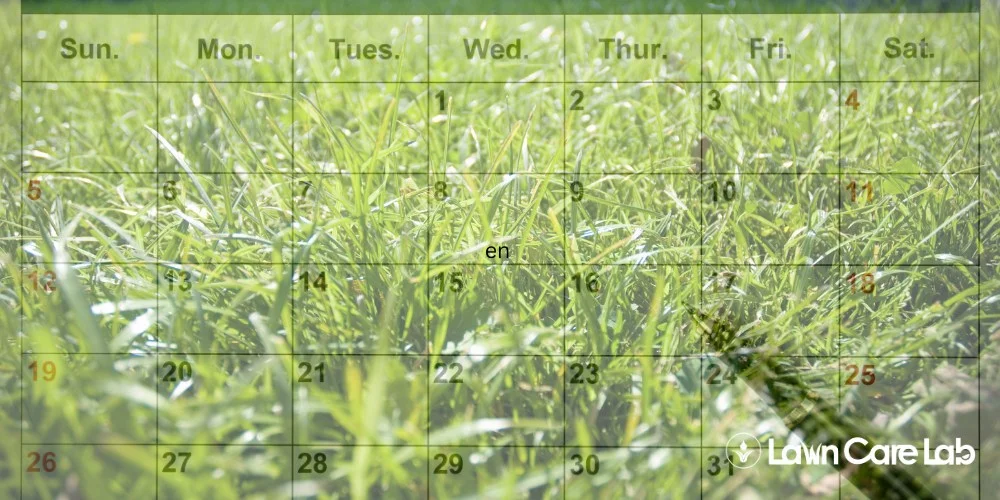
We’re going to look at how often you should aerate Bermuda grass. This depends on how much you use the grass and the condition of the soil.
Grass usage can be low or high; each type needs different care.
We’ll also discuss compacted soils, a problem that can harm your Bermuda grass, and how this changes the aeration process.
Low Use Grass
For areas not used much, aerate your Bermuda grass just once a year. This helps your lawn stay healthy. Aerating helps the grass soak up water and nutrients, grow strong roots, and fight off pests and diseases.
When picking the right tools, consider your lawn size and soil type. Be careful not to aerate too much, as this can harm your lawn.
To get a bright green lawn, follow these key steps for overseeding:
- Pick top-quality Bermuda grass seeds
- Water a lot after overseeding
- Try to keep people off the new grass until it’s grown in
- Use a slow-release fertilizer
- Only mow when the new grass is tall enough.
If you follow these steps, you’ll have a lush, green lawn all year.
High Use Grass
Compared to areas with less foot traffic, the parts of your lawn that are used more often need more care. Grass in busy areas like golf courses or sports fields needs extra attention. You should aerate these areas 2-3 times yearly to fight against compacted soil. This method helps the grass survive dry spells by helping water soak in and stay in the soil.
Also, don’t forget the need for proper feeding of the grass. Regular and balanced fertilizing keeps the grass healthy and helps prevent diseases, making your lawn look lively and strong.
Controlling weeds is also very important. Regular mowing at the correct height and aeration can help stop weed growth, which keeps your lawn looking good.
Always remember your safety and the environment’s safety are very important in each step.
Compacted Soils
Let’s talk about compacted soils after discussing high-use grass areas. These soils can harm your Bermuda grass’s growth and health. Compaction affects soil pH, drainage problems, root growth, soil nutrients, and organic matter.
Compaction can mess up the pH balance of thick soils, affecting the grass’s nutrient intake. It can also cause bad drainage, leading to water gathering on your lawn. Squeezed soil makes it hard for roots to grow and reach nutrients, limiting nutrient intake. Additionally, compaction reduces the amount of organic matter, which is essential for soil health.
To lessen these problems, you can aerate your lawn. If you have very compacted soils, you might need to aerate often, maybe every month during the summer. This will make your Bermuda grass happier!
Conclusion
So, you’ve learned how to aerate your Bermuda grass well. Don’t forget timing is really important. No need to hurry, but also don’t be late. The correct work at the right time keeps your lawn looking great.
You know ‘how’ to do it. Now it’s time to figure out ‘when’ and ‘how often.’ Stay alert, keep learning, and your Bermuda grass will be the best in your area.
Enjoy aerating!
FAQs on Aerating Bermuda Grass
What steps should be taken after aerating Bermuda grass?
When is the ideal time to aerate Bermuda grass?
Why is it important to aerate your lawn?
What preparations need to be made before aerating?
What are some potential issues with aeration?
When is the best time to topdress a Bermuda lawn?
How frequently should Bermuda grass be dethatched?
- How to Create a Lawn Care Schedule for Southern Climates - October 30, 2024
- How to Use Compost Tea to Boost Lawn Growth and Soil Health - October 23, 2024
- The Best Grasses for Saltwater-Exposed Lawns: Coastal Lawn Care - October 17, 2024

